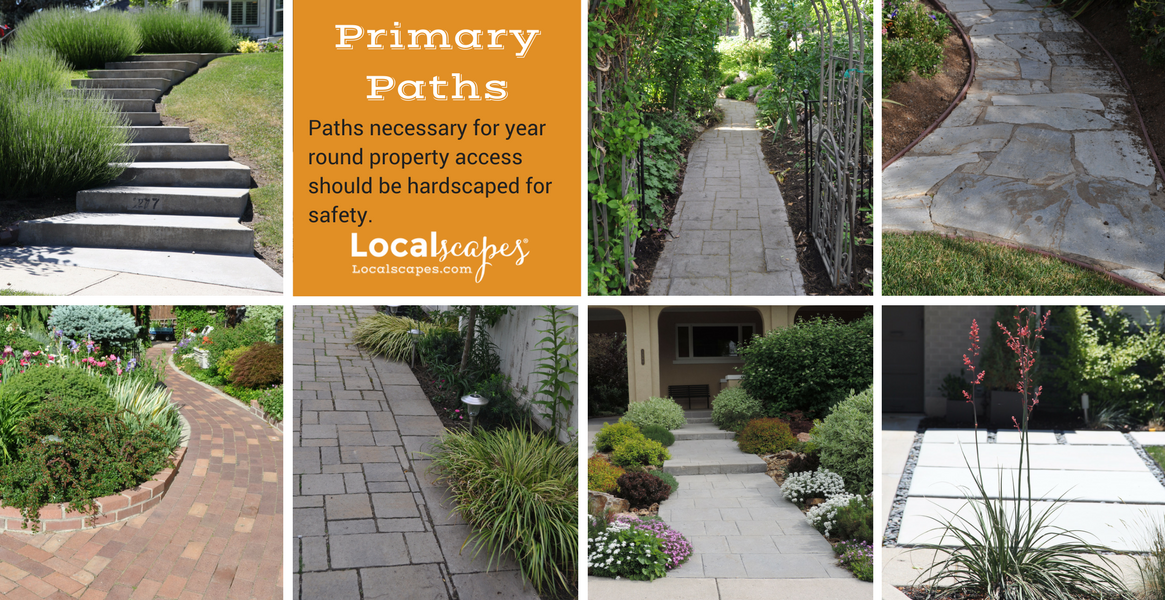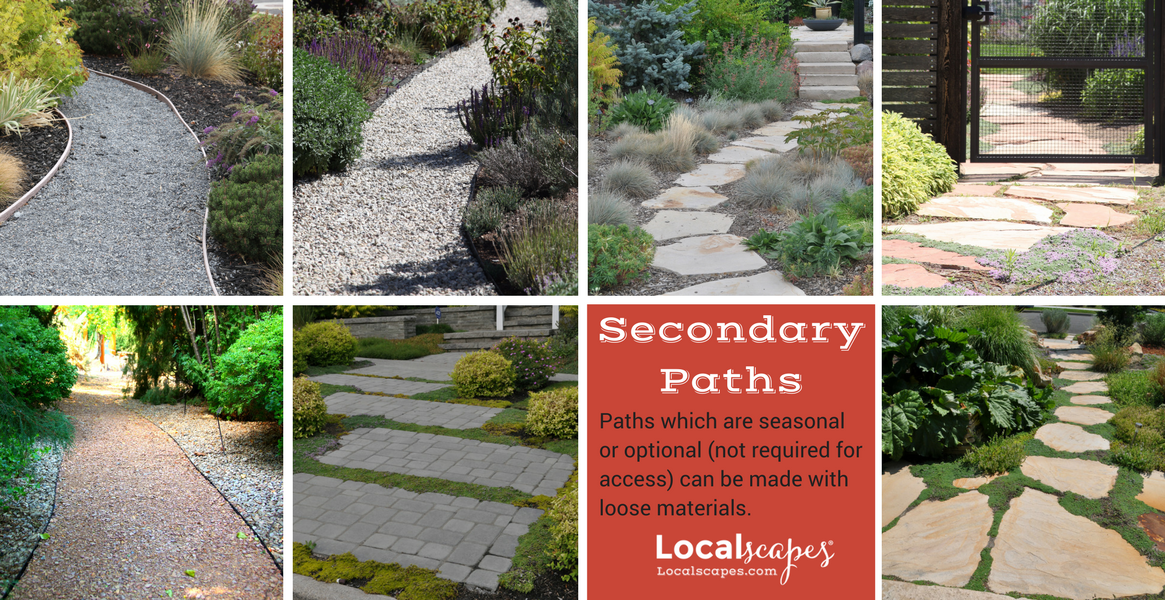
Creating Paths in the Landscape
-
 Paths are a landscape opportunity that’s all too often squandered. Over the last couple of articles, we’ve been reviewing the steps to “localize” your landscape, ranging from creating the Central Open Shape to adding Gathering Areas and Activity Zones. Paths are the connectors that pull the previous elements together and help us navigate the property in a safe and interesting way.
Paths are a landscape opportunity that’s all too often squandered. Over the last couple of articles, we’ve been reviewing the steps to “localize” your landscape, ranging from creating the Central Open Shape to adding Gathering Areas and Activity Zones. Paths are the connectors that pull the previous elements together and help us navigate the property in a safe and interesting way.
For paths, think outside the lawn. Lawn is often used for paths, but that’s problematic. First, narrow strips of grass are difficult to irrigate efficiently, and overspray is the outcome. Overspray into your planting beds dramatically increases the number of weeds that sprout. Edges of the lawn path will dry out more quickly than the center, which forces overwatering (and exacerbates that weed issue mentioned above). It’s a nasty cycle.
Speaking of edges, lawn paths create long edges, which are more work to maintain and which provide more opportunities for lawn to invade planting beds. Finally, lawn develops ruts and bare spots when it’s repeatedly stepped on in the same places. These problems can be minimized (or eliminated!) if we instead create paths out of non-living materials and save the lawn for the recreation areas of the landscape. With that in mind, let’s look at other options for beautiful paths:
-
Purpose
The first thing to consider is the purpose of the path and its season of use. Paths used for year-round for access to the home, such as the front walk, are “primary paths” and should be a smooth, hard surface such as concrete or pavers. This ensures safe access for everyone—including the mobility impaired. Any path that would require winter snow removal is a primary path. -

-
Paths which are optional or only used seasonally, such as a cut-through or maybe a side yard path, are considered “secondary paths” and can be made of stepping stones or looser materials like gravel. These budget-friendly paths make great weekend do-it-yourself (DIY) projects. Whichever path you choose, once it’s installed, you’ve dramatically decreased your Saturday maintenance load.
-

-
Route
If you’re following the Localscapes layout process, then you’ve already placed the Gathering Areas and Activity Zones in the landscape. Paths simply provide connection between them. That said, you’ll want to decide if the path should be a straight shot or provide a meandering stroll. Determine how you’d like to move between spaces then plan the right kind of path for the need.
-

-
Materials & Installation
Materials selection is determined partly by the purpose but also by the design of your home. Reflect the colors and materials of the home in the pathway materials to increase curb appeal and unify the home and landscape. Some materials are more DIY friendly than others so consider whether you'll install the path yourself or hire a pro when choosing the materials.
At the Conservation Garden Park, we demonstrate a number of different pathway materials and options for you to consider and compare.
-


